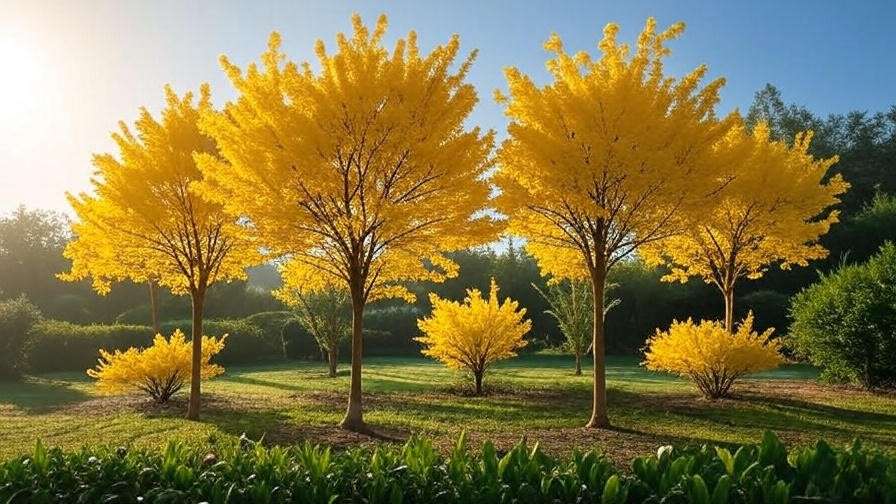Picture your garden glowing with the warmth of a summer sunrise, where vibrant yellow flowering trees steal the show, drawing gasps from neighbors and welcoming pollinators with open blooms. These radiant trees aren’t just a feast for the eyes—they’re a game-changer for any landscape, offering beauty, biodiversity, and a touch of joy. Whether you’re a seasoned gardener or just starting out, yellow flowering trees can transform your outdoor space into a cheerful haven. In this guide, we’ll explore seven stunning yellow flowering trees and share expert care tips to ensure vibrant, long-lasting blooms. Backed by horticultural expertise and practical gardening experience, this article will help you choose the perfect tree and keep it thriving. Let’s dive in and bring some sunshine to your garden! 🌻
The Magic of Yellow Flowering Trees in Your Landscape 🌿
Why Choose a Yellow Flowering Tree? 🌸
Yellow flowering trees are nature’s way of adding a burst of sunshine to your garden. Their bright, cheerful blooms lift moods, create a welcoming atmosphere, and serve as stunning focal points. Beyond aesthetics, these trees support local ecosystems by attracting pollinators like bees, butterflies, and hummingbirds, which are vital for biodiversity. 🐝 They also offer versatility, fitting into various garden styles—whether you’re designing a cozy urban patio or a sprawling rural landscape. From spring bloomers to summer showstoppers, yellow flowering trees deliver year-round appeal.
How to Use Yellow Flowering Trees for Maximum Impact 🎨
Strategic placement is key to showcasing your yellow flowering tree. Plant it as a centerpiece in your front yard, a vibrant border along a fence, or a shade provider near a patio. Pair it with contrasting plants—like purple lavender or deep green shrubs—for a striking visual effect. Consider bloom timing to ensure your garden stays colorful throughout the seasons. For example, early bloomers like Cornelian Cherry can kick off spring, while Tabebuia shines in summer. Planning for seasonal transitions keeps your garden dynamic and engaging.
The 7 Best Yellow Flowering Trees for Vibrant Blooms 🌞
Here’s our expertly curated list of seven yellow flowering trees, each with unique charm and specific care needs to ensure those vibrant blooms thrive. 🌼
1. Golden Chain Tree (Laburnum × watereri) 🌼
Description: The Golden Chain Tree is a showstopper with cascading clusters of bright yellow flowers resembling wisteria. Its compact size (15–25 feet tall) makes it perfect for small gardens or as an ornamental accent.
Growing Zones: USDA 5–7.
Care Tips:
- Light: Full sun for maximum blooms.
- Soil: Well-drained, moderately fertile soil; pH 6.0–7.0.
- Watering: Keep soil consistently moist but not waterlogged, especially in the first year.
- Pruning: Prune after flowering to maintain shape and remove dead wood.
- Expert Insight: Golden Chain Trees are toxic, so keep them away from pets and children. ⚠️ Regular pruning prevents legginess and encourages fuller blooms, as noted by the Royal Horticultural Society.
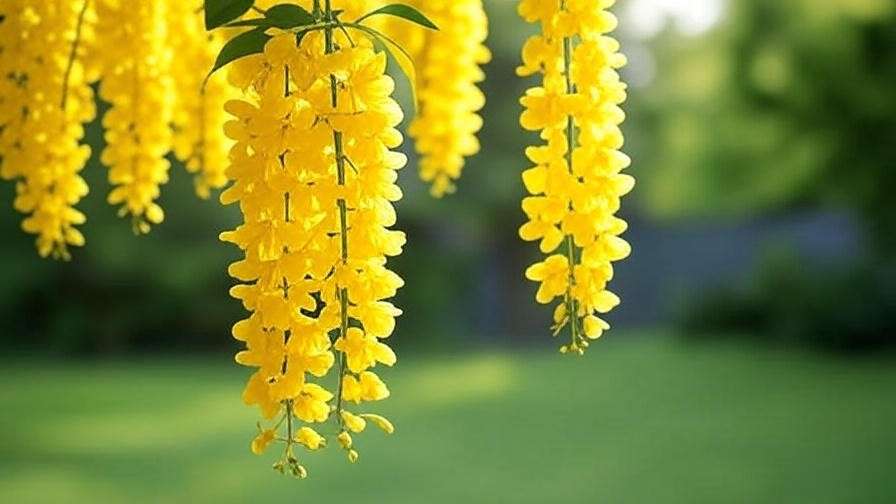
2. Yellow Magnolia (Magnolia ‘Butterflies’) 🌸
Description: With creamy yellow petals and a sweet fragrance, the Yellow Magnolia ‘Butterflies’ adds elegance to any garden. Growing 15–20 feet, it’s ideal for medium-sized spaces.
Growing Zones: USDA 4–8.
Care Tips:
- Light: Full sun to partial shade.
- Soil: Rich, well-drained soil with slightly acidic pH (5.5–6.5).
- Watering: Water deeply during dry spells; mulch to retain moisture.
- Fertilizing: Apply a balanced fertilizer in early spring to boost blooms.
- Expert Tip: Protect from late frosts, which can damage buds. Use organic mulch like pine bark to maintain soil acidity, a tip from university extension programs.

3. Tabebuia (Tabebuia spp.) – Trumpet Tree 🎺
Description: Known for its bold, trumpet-shaped yellow flowers, Tabebuia is a tropical beauty that transforms warm-climate gardens into vibrant displays. It grows 20–30 feet tall.
Growing Zones: USDA 9–11.
Care Tips:
- Light: Full sun for prolific flowering.
- Soil: Well-drained, sandy soil; tolerates poor soils.
- Watering: Moderate watering; drought-tolerant once established.
- Pests: Watch for spider mites; treat with neem oil for organic control.
- Example: Tabebuia trees light up public parks in Florida and Southern California, showcasing their resilience in warm climates.
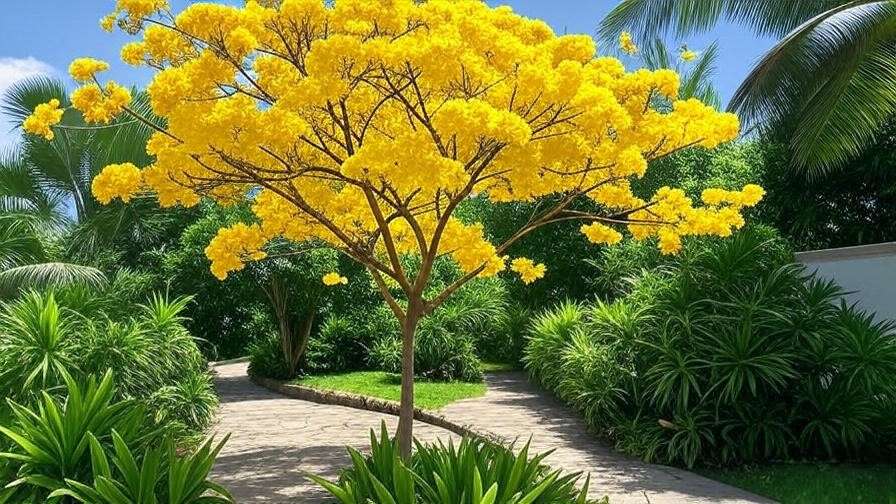
4. Desert Cassia (Senna polyphylla) 🌵
Description: The Desert Cassia is a drought-tolerant gem with delicate yellow blooms, perfect for arid regions. It grows 6–10 feet, ideal for xeriscaping.
Growing Zones: USDA 8–10.
Care Tips:
- Light: Full sun.
- Soil: Sandy, well-drained soil; neutral pH.
- Watering: Minimal; water sparingly once established.
- Maintenance: Light pruning to maintain shape.
- Expert Insight: Its low water needs make it a top choice for sustainable gardening, as recommended by desert botanical gardens. 🏜️
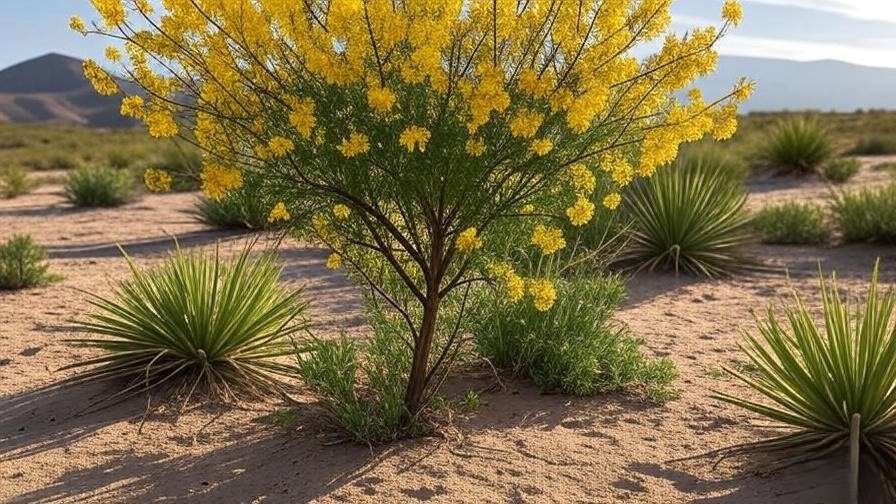
5. Palo Verde (Parkinsonia spp.) 🌞
Description: The Palo Verde boasts bright yellow flowers and unique green bark, creating a desert-chic aesthetic. It reaches 20–30 feet and thrives in hot climates.
Growing Zones: USDA 8–11.
Care Tips:
- Light: Full sun.
- Soil: Well-drained, sandy or rocky soil.
- Watering: Low; water deeply but infrequently.
- Pruning: Prune to enhance natural shape and remove dead branches.
- Case Study: Palo Verde is a staple in Southwestern U.S. landscapes, thriving in Arizona’s harsh summers.
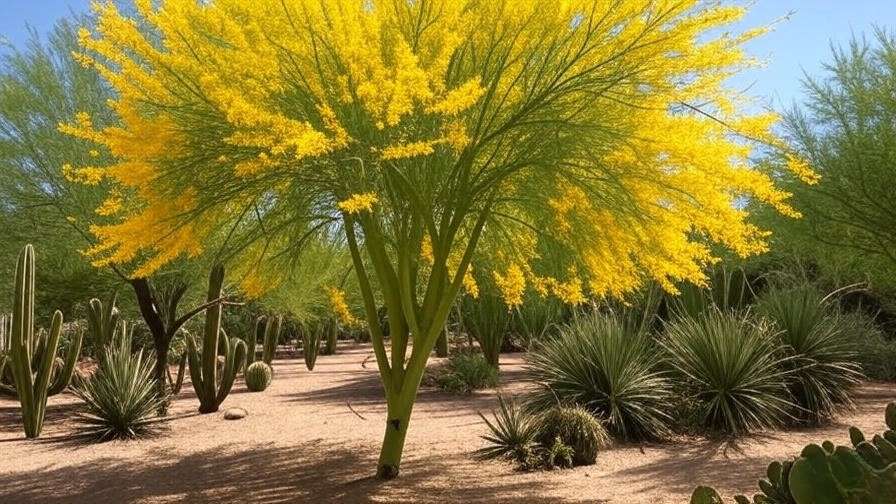
6. Cornelian Cherry (Cornus mas) 🍒
Description: This early spring bloomer dazzles with clusters of small yellow flowers, followed by edible red fruit. It grows 15–25 feet and suits colder climates.
Growing Zones: USDA 4–8.
Care Tips:
- Light: Full sun to partial shade.
- Soil: Well-drained, fertile soil; adaptable to pH.
- Watering: Moderate; keep soil moist during establishment.
- Harvesting: Pick fruit in late summer for jams or fresh eating.
- Expert Tip: Its dual-purpose nature (ornamental and edible) makes it a favorite for sustainable gardens, per Cornell University’s horticulture research.
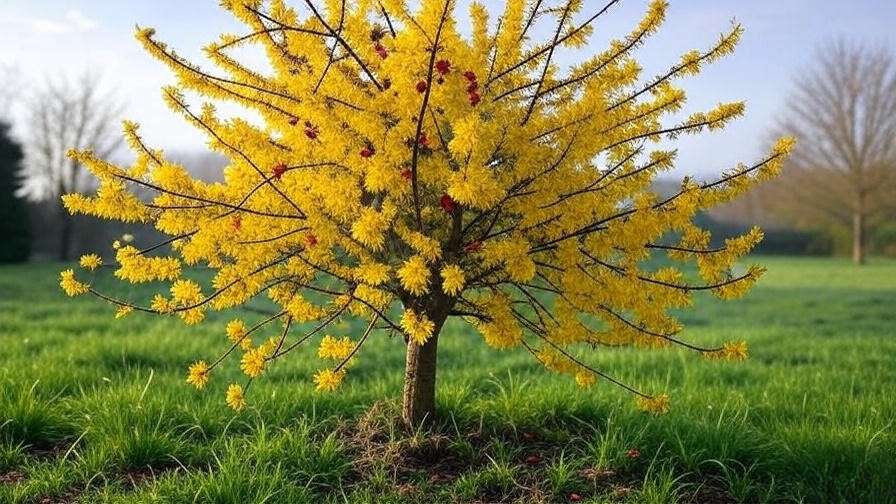
7. Royal Poinciana (Delonix regia) 🔥
Description: The Royal Poinciana is a tropical showstopper with fiery yellow-orange blooms, growing 20–40 feet. It’s perfect for coastal or warm climates.
Growing Zones: USDA 10–12.
Care Tips:
- Light: Full sun.
- Soil: Well-drained, loamy soil.
- Watering: Moderate; reduce in winter.
- Protection: Shield from strong winds to prevent branch damage.
- Example: Royal Poinciana lines streets in Miami, creating a tropical paradise vibe.
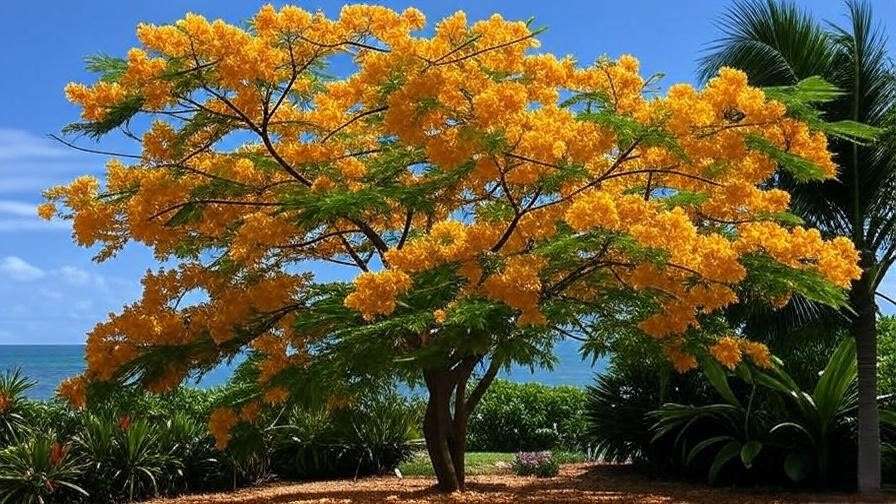
How to Choose the Perfect Yellow Flowering Tree for Your Garden 🌳
Assessing Your Climate and Soil Conditions 📍
Your garden’s climate and soil are critical for selecting the right yellow flowering tree. Check your USDA hardiness zone to ensure compatibility—Golden Chain Trees thrive in cooler zones (5–7), while Royal Poinciana needs tropical warmth (10–12). Test your soil’s pH and drainage using a home testing kit or local extension service. For example, Yellow Magnolias prefer slightly acidic soil, while Desert Cassia tolerates poor, sandy soils. Expert Tip: The University of Minnesota Extension recommends digital soil testers for accurate pH and nutrient readings. 🧪
Size and Space Considerations 📏
Match your tree’s mature size to your garden’s space. Small yards suit compact trees like Desert Cassia or Golden Chain, while larger spaces can handle Royal Poinciana’s spread. Avoid overcrowding by spacing trees at least 10–20 feet from structures or other plants, depending on the species. Common mistake: Planting too close to foundations, which can lead to root damage.
Aesthetic and Functional Goals 🎯
Define your garden’s purpose. Need shade? Palo Verde or Tabebuia are excellent choices. Want privacy? Golden Chain’s dense foliage works well. For pure beauty, Yellow Magnolia’s fragrant blooms steal the show. Combine with low-growing plants like marigolds or salvia for a cohesive look. Plan for seasonal interest to keep your garden vibrant year-round.
Essential Care Tips for Vibrant Yellow Blooms 🌸
Planting Your Yellow Flowering Tree 🌱
- Choose the Right Time: Plant in spring or fall for most trees to allow root establishment.
- Prepare the Site: Dig a hole twice as wide and as deep as the root ball. Amend soil with compost if needed.
- Plant Properly: Place the tree at the same depth as its nursery pot, backfill, and water thoroughly.
- Mulch: Apply 2–3 inches of organic mulch (e.g., wood chips) to retain moisture and suppress weeds.
Watering and Fertilizing 💧
Watering needs vary by species. Desert Cassia and Palo Verde require minimal water once established, while Golden Chain and Yellow Magnolia need consistent moisture. Use a soaker hose for deep watering. Fertilize in early spring with a balanced 10-10-10 fertilizer or a bloom-boosting formula for flowering trees. Expert Insight: Organic fertilizers like compost tea promote eco-friendly growth and reduce chemical runoff, per the EPA’s sustainable gardening guidelines. 🌍
Pruning and Maintenance ✂️
Prune after flowering to avoid cutting off next season’s buds. Remove dead or crossing branches to improve air circulation. For example, Tabebuia benefits from light pruning to maintain its shape, while Royal Poinciana requires heavier cuts to control its spread. Clean tools with alcohol to prevent disease spread. Create a seasonal maintenance checklist: spring fertilizing, summer watering, and fall cleanup.
Pest and Disease Management 🐞
Common pests include aphids (Golden Chain) and spider mites (Tabebuia). Use insecticidal soap or neem oil for organic control. Diseases like powdery mildew can affect Yellow Magnolias in humid climates; ensure good air circulation and avoid overhead watering. Expert Tip: Regular inspections catch issues early—check leaves and stems monthly for signs of distress.
Troubleshooting Common Problems with Yellow Flowering Trees 🚩
Even with the best care, yellow flowering trees can face challenges. Here’s how to diagnose and fix common issues to keep your trees thriving.
Why Aren’t My Trees Blooming? 🌸
Lack of blooms is a frequent concern. Common causes include:
- Insufficient Sunlight: Most yellow flowering trees, like Tabebuia and Palo Verde, need full sun (6+ hours daily). Relocate container trees or thin surrounding foliage to increase light exposure.
- Nutrient Deficiencies: Low phosphorus or potassium can stunt flowering. Apply a bloom-boosting fertilizer (e.g., 5-10-10) in early spring.
- Improper Pruning: Pruning at the wrong time can remove flower buds. For example, Golden Chain Trees should be pruned post-bloom to preserve next year’s flowers.
- Stress: Drought, overwatering, or poor soil drainage can stress trees. Ensure proper watering and test soil drainage.
Expert Tip: The American Horticultural Society suggests keeping a garden journal to track bloom patterns and identify recurring issues. 📝
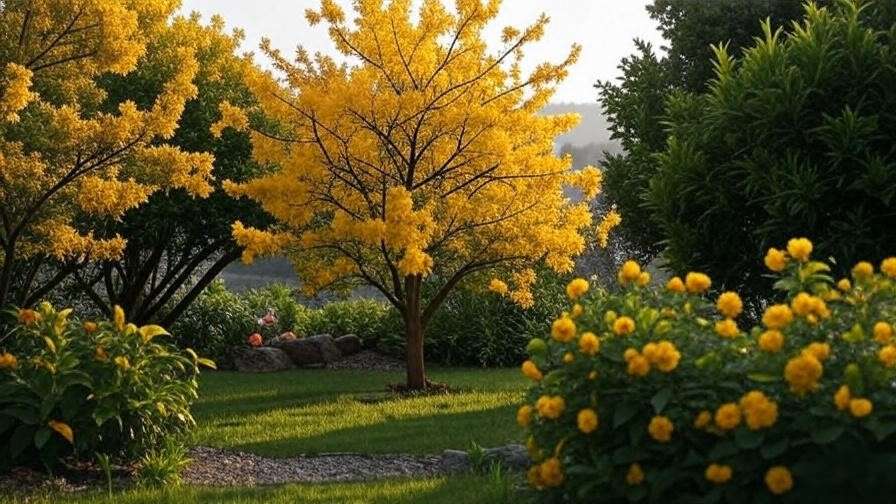
Yellowing Leaves or Wilting 😟
Yellowing leaves or wilting can signal:
- Overwatering: Check for soggy soil, especially in Yellow Magnolias. Improve drainage with raised beds or sandy amendments.
- Underwatering: Desert Cassia and Palo Verde tolerate drought but need regular water during establishment. Use a moisture meter for accuracy.
- Pests or Diseases: Aphids or fungal infections like root rot can cause yellowing. Inspect leaves and roots; treat with organic solutions like neem oil or improve soil aeration.
- Nutrient Issues: Iron deficiency can cause yellowing in Cornelian Cherry. Apply chelated iron supplements if soil tests confirm low levels.
When to Consult an Arborist 🧑🔬
If problems persist, consult a certified arborist. Persistent wilting, severe pest infestations, or structural issues (e.g., leaning in Royal Poinciana) may require professional intervention. The International Society of Arboriculture (ISA) offers directories to find qualified experts in your area.
FAQs About Yellow Flowering Trees ❓
What Is the Fastest-Growing Yellow Flowering Tree? 🌱
Royal Poinciana and Tabebuia are among the fastest-growing, often reaching 10–15 feet within a few years in ideal tropical conditions. For cooler climates, Golden Chain Trees grow moderately fast, adding 1–2 feet annually.
Are Yellow Flowering Trees Safe for Pets? 🐶
Some, like Golden Chain Trees, are toxic to pets if ingested (seeds and pods are particularly harmful). Yellow Magnolia and Cornelian Cherry are generally safer, but always supervise pets. Check ASPCA’s plant toxicity database for specifics.
Can I Grow Yellow Flowering Trees in Containers? 🪴
Yes, smaller varieties like Desert Cassia or dwarf Golden Chain Trees thrive in large containers with proper drainage. Use a high-quality potting mix and ensure containers have drainage holes to prevent root rot.
How Do I Protect My Tree from Extreme Weather? ❄️☀️
For cold climates (e.g., Cornelian Cherry in USDA 4), wrap trunks with burlap to prevent frost damage. In hot regions (e.g., Palo Verde in USDA 10), provide temporary shade during heatwaves. Stake young Royal Poincianas to protect against strong winds.
Which Yellow Flowering Tree Is Best for Small Yards? 🏡
Desert Cassia (6–10 feet) and Golden Chain Trees (15–25 feet) are ideal for small spaces due to their compact size and manageable growth.
Conclusion: Transform Your Garden with Yellow Flowering Trees 🌞
Yellow flowering trees are more than just plants—they’re a vibrant investment in your garden’s beauty and ecosystem. From the cascading blooms of the Golden Chain Tree to the tropical flair of the Royal Poinciana, these seven trees offer something for every gardener, climate, and aesthetic. By choosing the right tree for your space, following expert care tips, and troubleshooting issues proactively, you can enjoy stunning blooms for years to come. Start planting today and watch your garden come alive with sunny hues! 🌼
Call-to-Action: Have a favorite yellow flowering tree or a care tip to share? Drop it in the comments below or explore more plant care guides on our site to keep your garden thriving! 🌿

